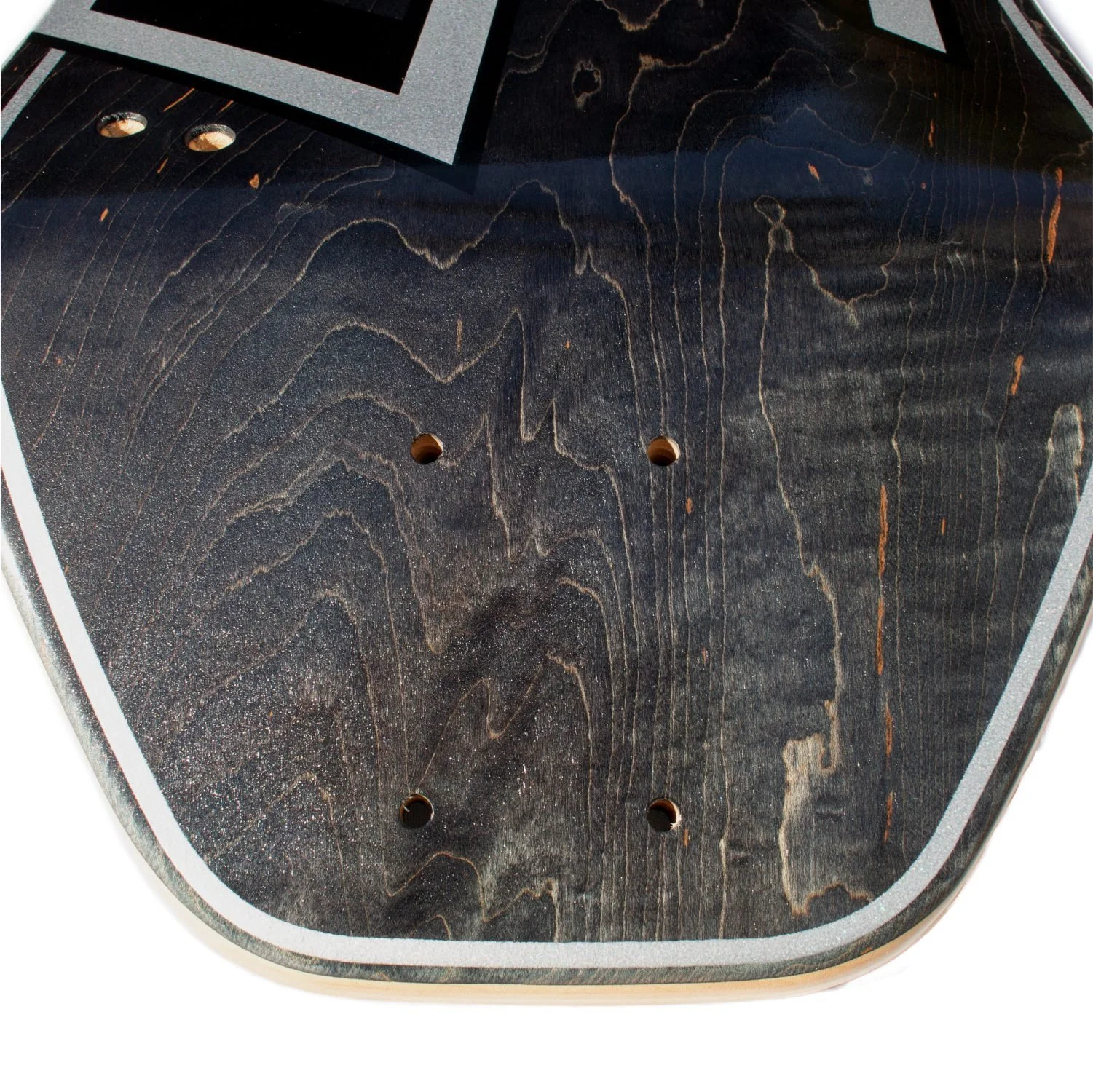11303 - MBS Comp 95 Mountainboard Deck - Silver Hex
The new Comp 95 Silver Hex deck combines the same great mold geometry and durable powerlam construction that was perfected in the final years of the iconic Comp 95 Birds deck, with a new perimeter shape that is as practical as it is eye catching. With a tapered tip and tail the new Comp 95 shape shaves a little weight and provides extra clearance for motors and mounts for riders heading in an electric direction.
Details:
- Asymmetric concave (low point under ball of your foot) fits your foot like a glove.
- Strong Power Lam construction (maple/epoxy/fiberglass) for a lightweight but durable deck.
- New tip shape shaves weight and offers more clearance for electric drivetrains.
Specs:
Deck Construction: Power Lam*
Deck Tip Angle: 30
Deck Length (Tip to Tip): 37.4 (in) / 95 (cm)
Deck Width (Max): 9.9 (in) / 25.1 (cm)
Deck Weight: 5 (lb) / 2.3 (kg)
Notes:
*Power Lam Composite Construction (PLC) is a time tested construction technique, combined with current composite technology. Power Lam decks consist of a horizontal laminate core made from several wood veneers. Different types of veneers are placed throughout the deck to yield the optimum performance required for that type of deck. Fiberglass is then added to increase the strength to weight ratio. MBS concentrates fiberglass layers close to the top and bottom layers where the bending stresses are highest.
The new Comp 95 Silver Hex deck combines the same great mold geometry and durable powerlam construction that was perfected in the final years of the iconic Comp 95 Birds deck, with a new perimeter shape that is as practical as it is eye catching. With a tapered tip and tail the new Comp 95 shape shaves a little weight and provides extra clearance for motors and mounts for riders heading in an electric direction.
Details:
- Asymmetric concave (low point under ball of your foot) fits your foot like a glove.
- Strong Power Lam construction (maple/epoxy/fiberglass) for a lightweight but durable deck.
- New tip shape shaves weight and offers more clearance for electric drivetrains.
Specs:
Deck Construction: Power Lam*
Deck Tip Angle: 30
Deck Length (Tip to Tip): 37.4 (in) / 95 (cm)
Deck Width (Max): 9.9 (in) / 25.1 (cm)
Deck Weight: 5 (lb) / 2.3 (kg)
Notes:
*Power Lam Composite Construction (PLC) is a time tested construction technique, combined with current composite technology. Power Lam decks consist of a horizontal laminate core made from several wood veneers. Different types of veneers are placed throughout the deck to yield the optimum performance required for that type of deck. Fiberglass is then added to increase the strength to weight ratio. MBS concentrates fiberglass layers close to the top and bottom layers where the bending stresses are highest.
The new Comp 95 Silver Hex deck combines the same great mold geometry and durable powerlam construction that was perfected in the final years of the iconic Comp 95 Birds deck, with a new perimeter shape that is as practical as it is eye catching. With a tapered tip and tail the new Comp 95 shape shaves a little weight and provides extra clearance for motors and mounts for riders heading in an electric direction.
Details:
- Asymmetric concave (low point under ball of your foot) fits your foot like a glove.
- Strong Power Lam construction (maple/epoxy/fiberglass) for a lightweight but durable deck.
- New tip shape shaves weight and offers more clearance for electric drivetrains.
Specs:
Deck Construction: Power Lam*
Deck Tip Angle: 30
Deck Length (Tip to Tip): 37.4 (in) / 95 (cm)
Deck Width (Max): 9.9 (in) / 25.1 (cm)
Deck Weight: 5 (lb) / 2.3 (kg)
Notes:
*Power Lam Composite Construction (PLC) is a time tested construction technique, combined with current composite technology. Power Lam decks consist of a horizontal laminate core made from several wood veneers. Different types of veneers are placed throughout the deck to yield the optimum performance required for that type of deck. Fiberglass is then added to increase the strength to weight ratio. MBS concentrates fiberglass layers close to the top and bottom layers where the bending stresses are highest.



